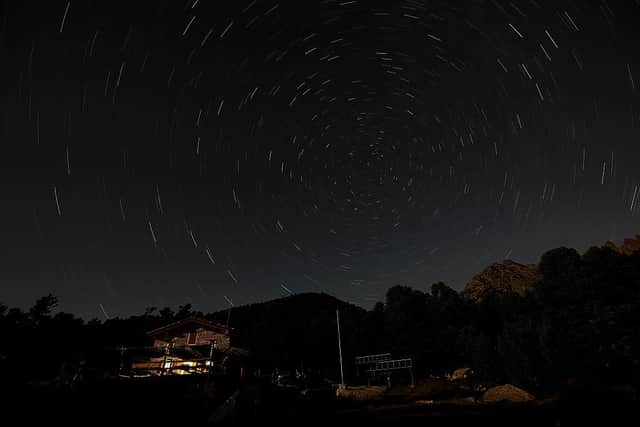Perseid meteor shower 2021: how to see the Perseids in UK skies - and date it peaks
This article contains affiliate links. We may earn a small commission on items purchased through this article, but that does not affect our editorial judgement.
and live on Freeview channel 276
Each year the annual Perseid meteor shower occurs, with meteors being visibly cast across the skies.
The shower is regarded as a highlight of the meteor hunters’ calendar due to its bright meteors and high hourly rate.
This is what you need to know.


What is the Perseid meteor shower?
Advertisement
Hide AdAdvertisement
Hide AdRoyal Museums Greenwich (RMG) says that the Perseid meteor shower gets its name because the meteors appear to originate from the constellation of Perseus.
The shower is caused by the Earth “slamming into the debris left behind by comet 109P/Swift-Tittle in July and August every year”, RMG explains.
NASA says: “All meteors associated with one particular shower have similar orbits, and they all appear to come from the same place in the sky, called the radiant.
“Meteor showers take their name from the location of the radiant. The Perseid radiant is in the constellation Perseus.”
Advertisement
Hide AdAdvertisement
Hide AdAccording to Greek mythology, Perseus was a Greek hero, son of Zeus, and beheaded the Gorgon Medusa.
We want to hear from you: let us know what you think about this story and be part of the debate in our comments section below
When will the meteor shower be visible?
The Persied meteor showers first became visible on 16 July, and will continue to be visible until 23 August - but the peak dates to view them will be between 12 and 13 August.
RMG says that the best time to see the meteor shower is when the sky is at its darkest, and when “the target is at its highest position in the sky”.
Advertisement
Hide AdAdvertisement
Hide AdFor meteor showers, this tends to occur between midnight and the very early hours of the morning.
RMG adds: “The radiant of the Perseids is actually always above the horizon as seen from the UK, which means that observers in the UK should be able to see some meteroes as soon as the Sun sets.
“Therefore, it is worth looking up in the early evening.”
Additionally, it’s always best to try and spot the meteors when the Moon is below the horizon, or when it's in its crescent phase, otherwise the Moon itself will act as natural light pollution and can stop some of the fainter meteors from being visible.
How to watch the showers
NASA says that if it’s not cloudy, all you need to do is find an observation spot away from bright lights, lie on your back and look up - “you don’t need any special equipment to view the Perseids”.
Advertisement
Hide AdAdvertisement
Hide AdIn fact, telescopes and binoculars are actually not recommended due to their small fields of view.
You’re going to want to find a spot that offers an unobstructed view of the sky, so stay away from places populated with tall buildings or trees.
Additionally, light pollution can be an issue, so you may want to do some research beforehand to find the best spot nearest you - you can use an interactive light pollution map to see the levels of light pollution around the world.
Generally speaking though, the further into the countryside and away from the city, the less light pollution will pose an issue.
Advertisement
Hide AdAdvertisement
Hide AdThe meteors will be visible all over the sky, so you don’t need to worry about looking in any particular spot or direction.
You’ll need to give your eyes 15 minutes to adjust to the darkness, and try not to look at your phone as well, in order to get the best view of the meteors.
A message from the editor:
Thank you for reading. NationalWorld is a new national news brand, produced by a team of journalists, editors, video producers and designers who live and work across the UK. Find out more about who’s who in the team, and our editorial values. We want to start a community among our readers, so please follow us on Facebook, Twitter and Instagram, and keep the conversation going.
Comment Guidelines
National World encourages reader discussion on our stories. User feedback, insights and back-and-forth exchanges add a rich layer of context to reporting. Please review our Community Guidelines before commenting.
